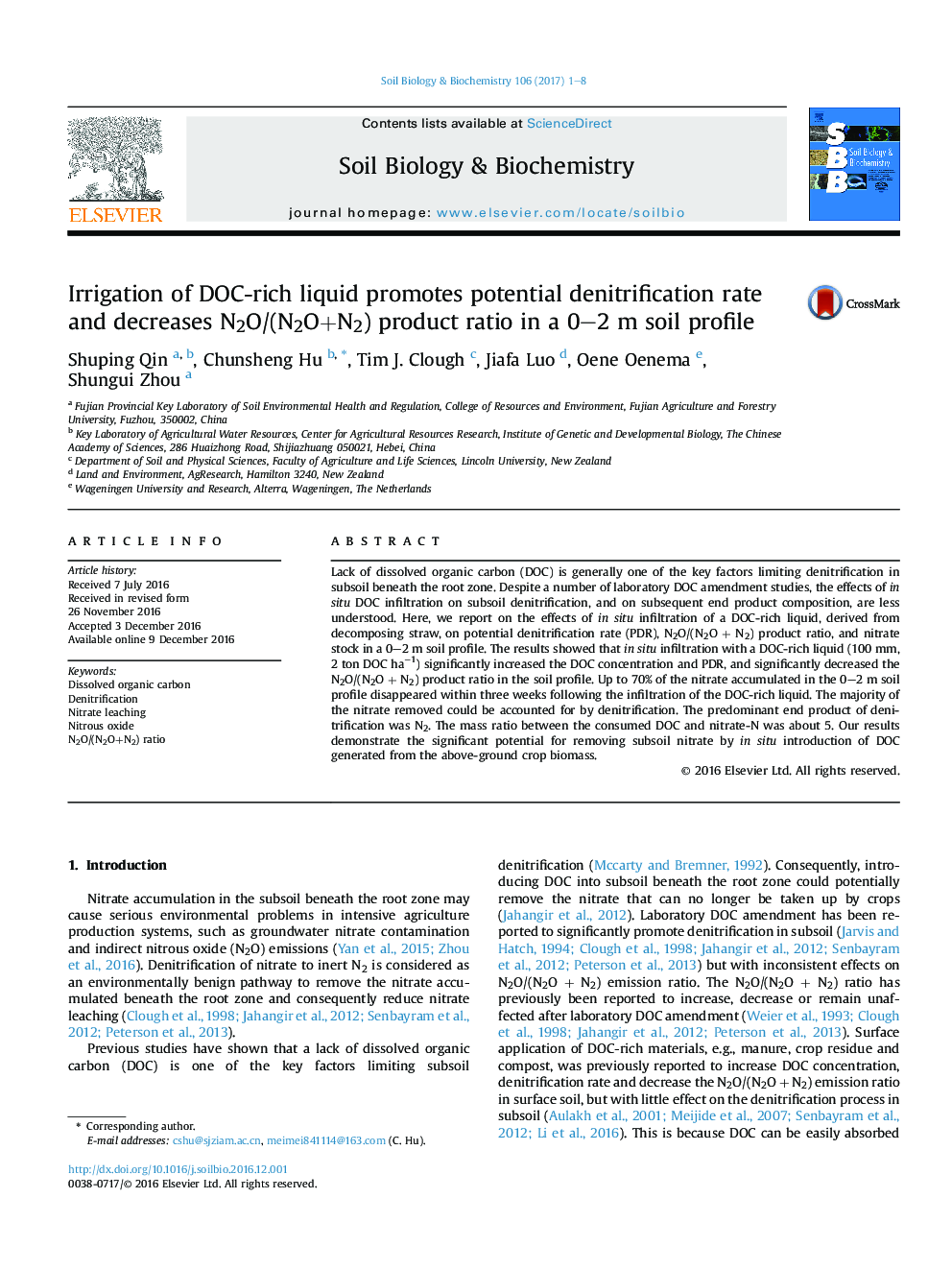| Article ID | Journal | Published Year | Pages | File Type |
|---|---|---|---|---|
| 5516564 | Soil Biology and Biochemistry | 2017 | 8 Pages |
â¢DOC-rich liquid was prepared from straw.â¢DOC infiltration removed nitrate in a 0-2 m soil profile.â¢N2 was the predominant end product from denitrification under anaerobic condition.â¢The mass ratio between consumed DOC and nitrate-N was 5 after DOC infiltration.â¢DOC infiltration has the potential to reduce the risk of subsoil nitrate leaching.
Lack of dissolved organic carbon (DOC) is generally one of the key factors limiting denitrification in subsoil beneath the root zone. Despite a number of laboratory DOC amendment studies, the effects of in situ DOC infiltration on subsoil denitrification, and on subsequent end product composition, are less understood. Here, we report on the effects of in situ infiltration of a DOC-rich liquid, derived from decomposing straw, on potential denitrification rate (PDR), N2O/(N2OÂ +Â N2) product ratio, and nitrate stock in a 0-2Â m soil profile. The results showed that in situ infiltration with a DOC-rich liquid (100Â mm, 2 ton DOC haâ1) significantly increased the DOC concentration and PDR, and significantly decreased the N2O/(N2OÂ +Â N2) product ratio in the soil profile. Up to 70% of the nitrate accumulated in the 0-2Â m soil profile disappeared within three weeks following the infiltration of the DOC-rich liquid. The majority of the nitrate removed could be accounted for by denitrification. The predominant end product of denitrification was N2. The mass ratio between the consumed DOC and nitrate-N was about 5. Our results demonstrate the significant potential for removing subsoil nitrate by in situ introduction of DOC generated from the above-ground crop biomass.
